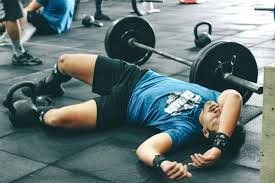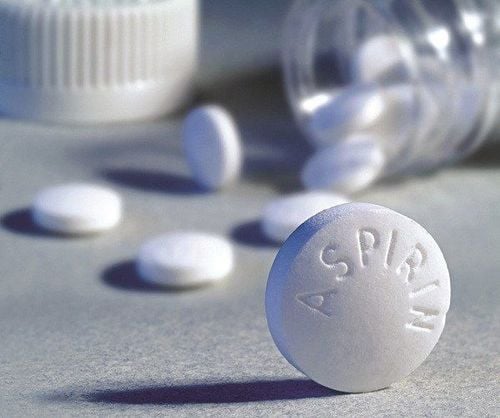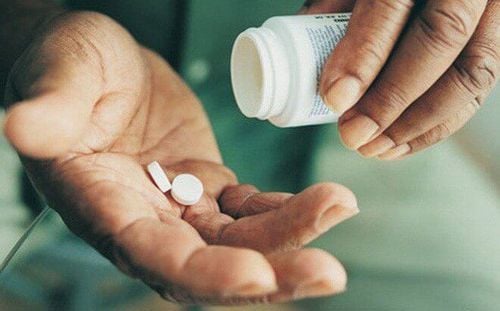This is an automatically translated article.
Stroke after exercise is mainly because the patient already has risk factors such as underlying disease, advanced age combined with sudden cold weather.1. What is a stroke?
When a blood vessel to the brain is blocked or ruptured, the brain does not receive enough oxygen, causing a stroke. Then part of the brain begins to die and the brain is damaged. Stroke is one of the leading causes of death and leaves some permanent sequelae for patients.
Đột quỵ là một trong những nguyên nhân gây tử vong cao
2. Beware of stroke after exercise
Stroke after exercise is caused by the patient already having pre-existing risk factors such as underlying disease, advanced age combined with sudden cold weather.According to experts, when the patient himself has pre-existing medical factors that lead to cerebral infarction or rupture of cerebral blood vessels, he is at high risk of having a stroke. In addition, if the practitioner cannot control the level of exercise, it will lead to excessive exercise.
There are many factors associated with stroke including: obesity, hyperlipidemia, smoking, sedentary lifestyle, unhealthy lifestyle, frequent stress, hypertension, diabetes metabolic disease sugar, ... The elderly are the subjects that often encounter these diseases. For young patients, stroke is also associated with genetic factors, abnormal blood vessels, blood clotting conditions that increase the risk of blood vessel rupture, or blood vessel blockage.
Therefore, regular moderate or low-intensity exercise will be better than high-intensity exercise, helping the body to be more flexible and preventing some other dangerous diseases such as diabetes, heart disease. pulse, overweight...
According to doctors, due to poor patient compliance, stroke cases are increasing. When there is no doctor's prescription, many people still buy medicine or self-medicate, do not go to the doctor's office for a check-up. In order to prevent disease, people who have had a stroke still need to take medicine, almost all of them will have to take medicine for life to prevent recurrence because it doesn't mean that taking medication is the cure for the disease.
In addition, in order to screen for risk factors and treat them early, patients need to have a high awareness of disease prevention, especially with young people, subjective psychology, and no periodic health check-ups.
Many cases of stroke have early symptoms but do not realize, and by the time they leave the hospital, it is too late. This case accounts for up to one-third of strokes, most often in people with mild strokes, also known as "transient ischemic attacks".
Some signs may appear and return soon such as sudden loss of vision, weakness in an arm or leg for several minutes. It is very dangerous to ignore these symptoms, but this creates a subjective feeling for the patient. These symptoms are the early warning signs of a stroke.
3. Who is at risk of stroke after exercise?
Stroke (cerebral vascular accident), occurs when a part of the brain is damaged due to a blockage of a blood vessel supplying the brain, causing a stroke. Oxygen is not supplied enough to the brain, suddenly stops for a few minutes, brain cells begin to gradually die and can die at any time.
Heart rate will change, beat faster when doing sports. It will be very dangerous when the heart rate increases rapidly if you do not regularly exercise to control your heart rate, blood pressure will also increase, accompanied by ischemic attacks. These symptoms are usually transient, lasting for a few minutes, then the patient will return to a normal state. However, these are warning signs of future strokes. Some stroke symptoms can be recognized such as dizziness, severe headache, stiff neck, nausea, loss of vision, double vision, loss of consciousness, difficulty awakening, even in some cases death right.
Subjects prone to stroke when exercising are those with cardiovascular diseases, high blood pressure or low blood pressure, asthma, respiratory diseases, alcohol abuse, smoking leaves, the elderly are suffering from cognitive disorders.
Everyone can do sports, but everyone's physical condition is not the same, so it is necessary to rely on health status to apply the right amount of exercise, combined with a reasonable diet.
To ensure safety when exercising, people with the above diseases need to be careful, avoid overexertion, it is best to have a coach to observe and check the heart rate continuously. When exercising, always pay attention to check your heart rate and keep your heart rate in a safe area (<75% of maximum heart rate), check your blood pressure every day (blood pressure is always stable at 120/80mmHg), always Carrying an asthma inhaler when suffering from chronic diseases related to the cardiovascular and respiratory system, it is necessary to pay attention to the exercise and nutrition regimen. To avoid obesity affecting cardiovascular diseases, body weight should be adjusted. Maintain 7-8 hours of sleep every day. To improve and maintain good health, exercise 3-5 days/week. Limit foods with high cholesterol. Drink at least 2 liters of water every day.
You should check your general health before exercising to make sure you are completely healthy, able to withstand strenuous sports when you practice and find a trainer to guide you in the initial exercise steps, suitable for your health. your health. Practice with proper posture, even the smallest details. You should choose exercises that strengthen the cardiovascular system. You should only reach the highest level of breathing difficulty but still be able to talk while exercising. Should alternate between breaks, should not be too strenuous continuously. When heart rate, breathing and blood pressure have returned to normal, do the next set. Stop exercising immediately and rest for at least 3 days if you feel tired or feel unusual that day. If the signs of a stroke become more apparent, see your doctor right away.

Hãy luyện tập thể thao đều đặn với cường độ trung bình
4. How to handle a stroke
Immediately call 911 for safe transport to the nearest hospital. Find the opportunity to seek treatment during the golden hour to 'save the brain'" if the patient has any of the above symptoms
To help the patient breathe well, it is necessary to keep the surrounding environment well-ventilated while waiting for an ambulance. Place the patient on a flat surface if the patient is conscious. The patient should be placed in a safe side position if there is any sign of impaired consciousness, or if the patient shows signs of vomiting. avoid aggravating the disease and waste time in treatment, absolutely do not arbitrarily treat the patient with acupressure, acupuncture, or wind. Do not allow the patient to eat or drink or use drugs. extrathoracic heart rate (80-100 beats per minute) until the heart resumes in case the patient has no pulse or stops breathing.
Stroke is an extremely dangerous disease if not diagnosed and treated in time. Therefore, early screening for stroke is extremely important and necessary.
Currently, Magnetic Resonance Imaging - MRI/MRA is considered a "golden" tool for brain stroke screening. MRI is used to check the condition of most organs in the body, especially valuable in detailed imaging of the brain or spinal nerves. Due to the good contrast and resolution, MRI images allow to detect abnormalities hidden behind bone layers that are difficult to recognize with other imaging methods. MRI can give more accurate results than X-ray techniques (except for DSA angiography) in diagnosing brain diseases, cardiovascular diseases, strokes,... Moreover, the process MRI scans do not cause the side effects seen in X-rays or computed tomography (CT).
Vinmec International General Hospital currently owns a 3.0 Tesla MRI System, which is equipped with state-of-the-art equipment by GE Healthcare (USA) with high image quality, allowing for a comprehensive assessment, without omitting the injury without leaving any damage. and reduce shooting time. Silent technology helps to reduce noise, create comfort and reduce stress for the client during the shooting process, resulting in better image quality and shorter imaging time. With the state-of-the-art MRI system With the application of modern methods of cerebral vascular intervention, a team of experienced and well-trained neurologists and radiologists, Vinmec is a prestigious address for stroke risk screening and screening. reliable goods.
In the past time; Vinmec has successfully treated many cases of stroke in a timely manner, leaving no sequelae: saving the life of a patient suffering from 2 consecutive strokes; Responding to foreign female tourists to escape the "death door" of a stroke;...
Please dial HOTLINE for more information or register for an appointment HERE. Download MyVinmec app to make appointments faster and to manage your bookings easily.













